In my 3rd year of teaching, I taught first and second grade. There were so many behavior problems such as kids rolling on the carpet, having fits, peeing their pants, asking to get water or go to the bathroom just to get out of the classroom, yelling out, refusing to do their work…. NO ONE was having fun, myself included, and they were barely learning.
What I know now… I’d do almost everything differently so I could love teaching math.
Join me for 6 ways to love teaching math– even if you’ve NEVER liked math in your entire life (because that was me)!
On This Episode about Ways to Love Teaching Math:
- the freedom to get creative
- providing the time for students to explore
- real world experiences in math
- how you can begin to love teaching math
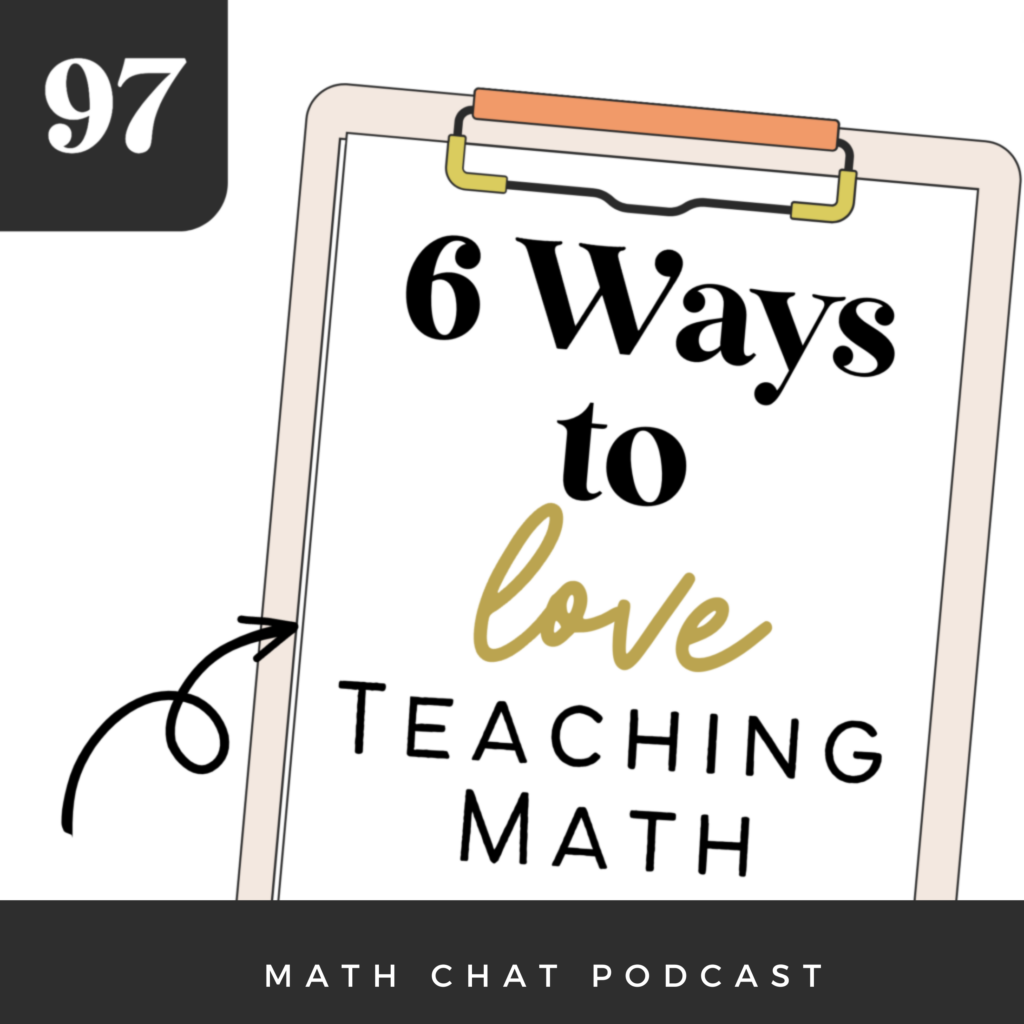
Let Me Tell You a Story…
In my 3 year of teaching I taught 1st 2nd grade multiage. We integrated everything, utilized small groups and zoned in on grouping kids to meet their needs– we differentiated a lot…except for math. For math we switched rooms, my second graders walked down the hall and the first graders came to my classroom. I had no idea what I was doing and was just trying to get them to count the things and fill out workbook pages… it was terrible.
I hated teaching math.
There were so many behavior problems- kids rolling on the carpet, having fits, peeing their pants, asking to get water or go to the bathroom just to get out of the classroom, yelling out, refusing to do their work…. No one was having fun, myself included, and they were barely learning.
What I know now… I’d do almost everything differently
Which spurred an idea for this episode. If I could talk to my 24 year old self and give her some advice… this is what it would be.
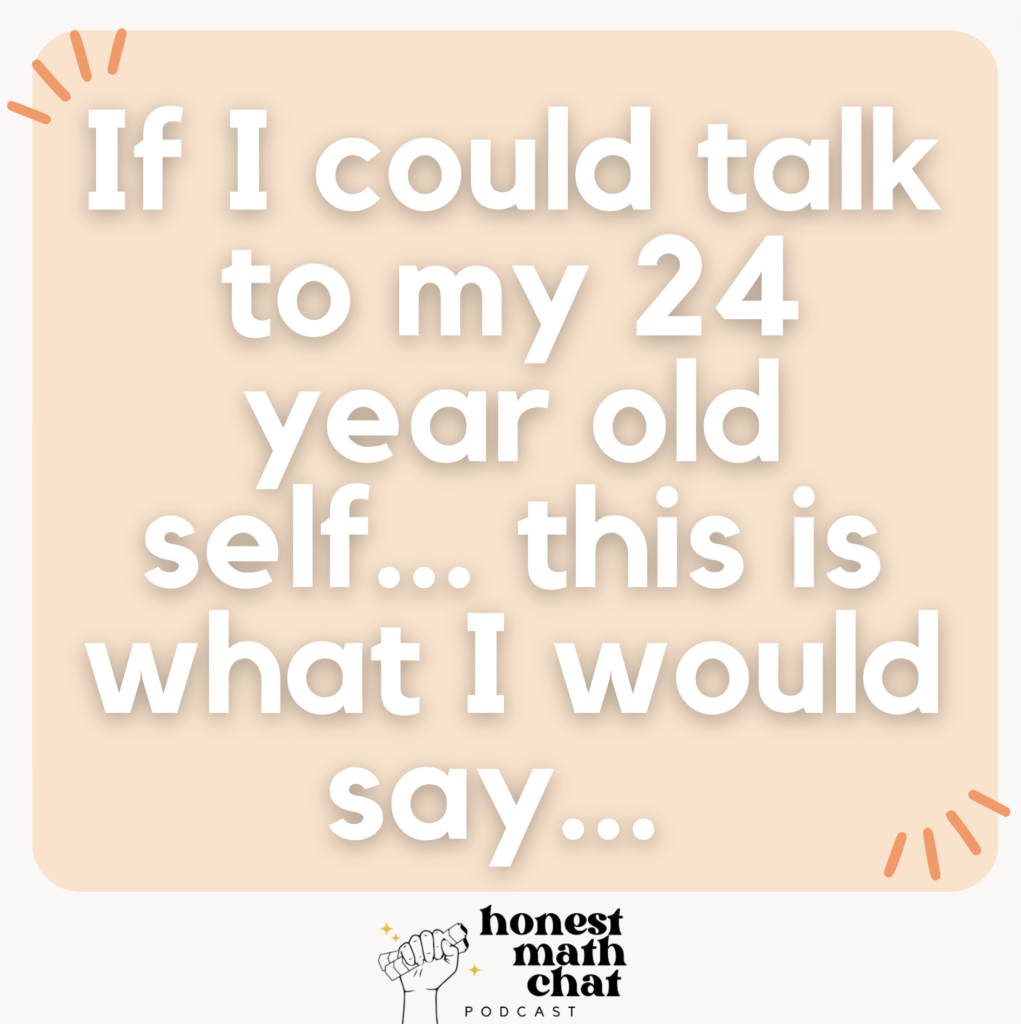
6 ways to love teaching math– even if you’ve NEVER liked math in your entire life (because that was me)
**Which has me thinking– if you have people in your school that are like me, share this episode with them. Say something like, “Hey I know math isn’t your thing like it is mine, but my favorite podcaster, Mona just did an episode all about how she hated teaching math and gives 6 ideas to make it more fun for the teacher (and the kids). I’ll text you the link you should listen to it.”
That would mean the world to me… to reach some teachers like me, to help them feel productive and joyful during that time instead of just trying to get through it as quickly as possible… dang that’s so relatable to me and I’m passionate about helping those teachers!
#1 Linking Your Passion to Math
As elementary teachers we can’t be passionate about everything. If we give EVERYTHING to EVERY subject we burn out, quickly. So, that’s not what this episode is about. Instead, it is about taking what you already do and are successful with and apply it to math.
So, what do you love about teaching?
What parts of your day are your favorite with your students?
What was my passion?
Getting to know my students. I lived for that first circle up in the morning. In fact, I just LOVE to circle up, get eyes on everyone and chat. Morning meeting was my favorite time of day. We do a check in- share how we’re doing, say good morning and be greeted by the class. Then, we’d have time to share to get to know each other better. And then play a game– usually that was tied to our character goal for the week. If we were working on the value of new friendships we’d do a game that helped us mingle. Maybe, if we were working on integrity we’d do a game that required you to be honest. I think my favorite part of the morning meeting is the end- the debrief. We’d talk about why all of this mattered. How it related to what was currently going on in our class, our school, our world. We’d give context to our games and greetings and talk about how these skills could make a difference in our world.
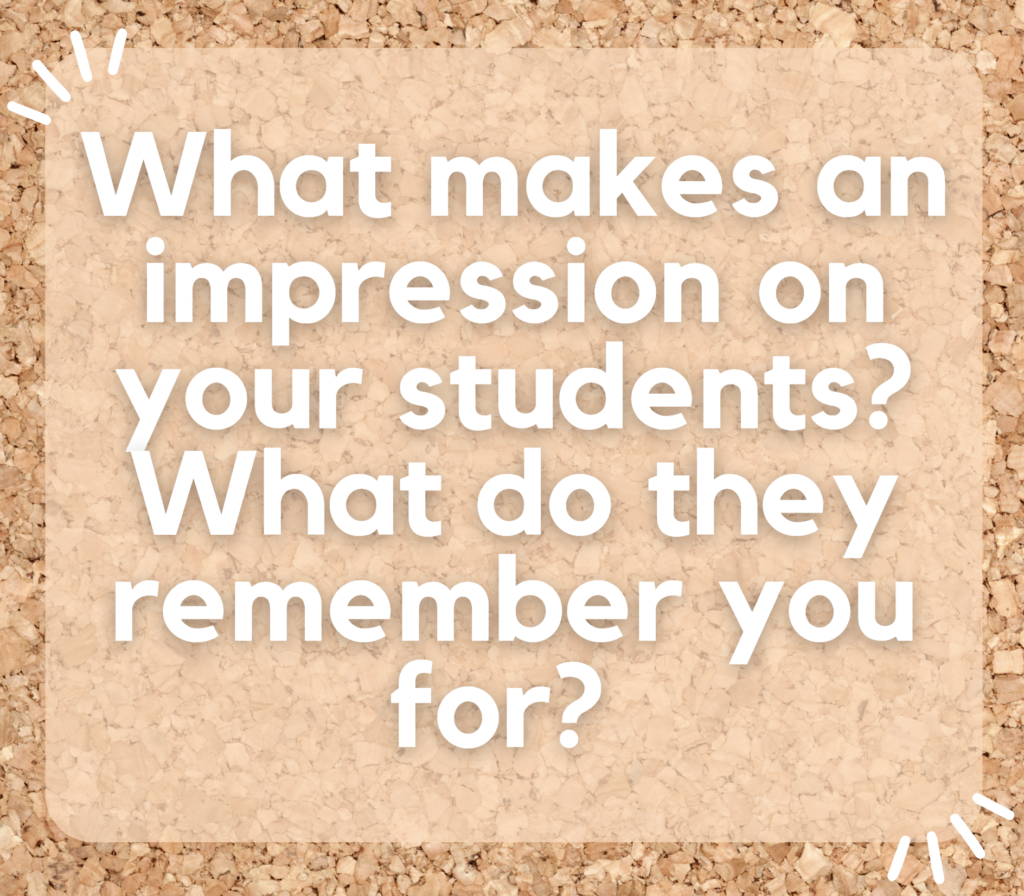
So that feeling is what brought me joy…
so I started to take it with me to every subject, even math. How could I start getting my students to FEEL like they knew each other and could sit down together and chat, and talk about big problems in the world and how the little steps we were taking could tackle those big things?
Maybe yours is read alouds, or group work- watching students light up about a story and make connections, or seeing how they navigate working together and getting fresh ideas from others. Maybe you love to incorporate service learning or writing projects that you can share outside of the classroom?
Take a second to think about what you do best in the classroom… What makes an impression on your students, what do they remember you for?
Then, let’s do more of that in math!
#2 Freedom to Get Creative
You have a curriculum and resources that was written for kids all over the country/world. It wasn’t written for your students– that’s where you come in. YOU know your students. You understand their strengths, interests, areas of need for more support, you know when they need a challenge or a scaffold.

This is your permission slip to be creative.
You’re creative in every other part of your day, you CAN BE CREATIVE IN MATH!
You are the expert in the room. SO, integrate problems into your science unit, bring a read aloud into math and then solve related problems, use music, try those engagement techniques you use to get students excited during writing…try them in math!
#3 Routines Really Make a Difference
Having a routine for math will simplify your life and allow you to focus on what matters. Many times our curriculum changes the routine each day. I say, instead of everyday doing something different… set a routine and stick to it. Routines create predictable, safe environments and that is a place where learning can happen best.
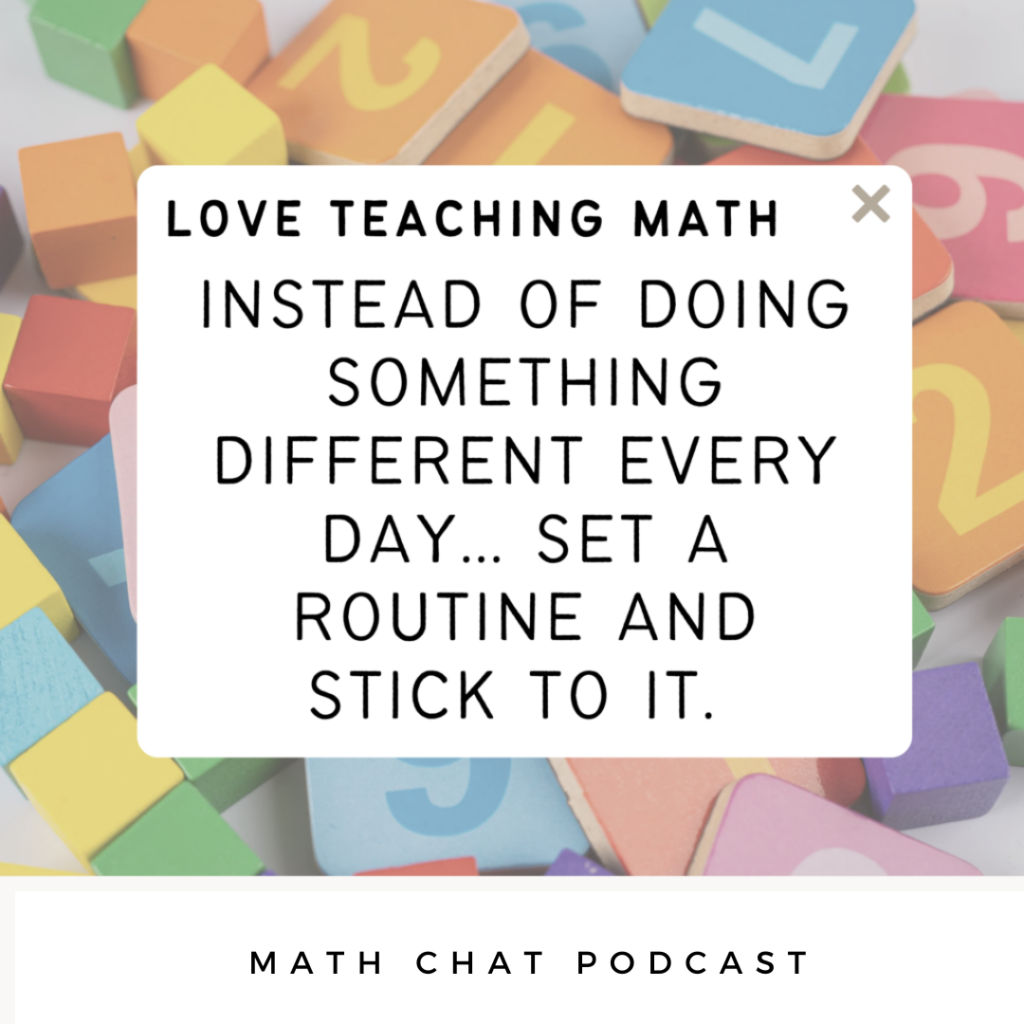
So, reduce the stress of figuring out what we’re doing today in math and just stick to a routine. You can insert the parts of your curriculum lesson into the routine. Here’s an example of a routine you might use: for a 50 minute math block (hopefully you have longer)
-warm up 5 to 10 minutes
-launch the tasks (5 mins)
-Exploration time (10 mins)
-Discuss & Share (20 mins)
-Reflect & Apply (10)
#4 Providing Time for Exploration
Teaching isn’t telling. Teaching is about designing experiences for students where they can learn a concept in a way that connects to what they already know and take it to the next level.
Math is a lot like science, STEM, right? We embrace inquiry in science class, but often in math we do the opposite… We just tell kids what they should know (telling isn’t teaching) and then expect them to be able to do it right then. And even though that’s the way we’ve been teaching math & been taught math for decades, that’s not the best way. I know! It’s annoying to think that you were taught and then taught to teach in a way that’s not the best way… stick with me here.

Teaching students math is best done through a more inquiry based approach. Allowing students to explore the problem first, and using what they know to solve or even attempt to solve. Then, providing the support and explanations to help them solidify their understanding.
Let Me Give You An Example
If you teach 2nd grade and the students have a problem like, “There are 14 beads on the table. Ms. Swift brings 98 more beads to the table to make bracelets. Now, how many beads are on the table?” This is a simple join problem– we start with some, more are added, how many do we have now?
So, students should be able to understand that context after you launch it with them– then we let them explore. Because they have strategies– from kindergarten & 1st, from their home life, from being a human for 7 years… so we put out the manipulatives, pencils, and paper and we see what they will do. Some will start drawing by 1s- draw 14, draw 98. Others will group them into tens and ones, 1 ten, 4 ones, 9 tens, 8 ones. While some will start at 98 on their hundreds chart and count up by 1s 14. Others might know that you can add the tens and add the ones.
THEN, after students have had time to look and think and solve… then we bring them all together to share their ideas and share how they solved. This gives us something to talk about in the discussion or debrief.
This flips what you do on its head a bit right? Instead of showing them what to do first I want you to let them explore first and then formalize that exploration after with an explanation.
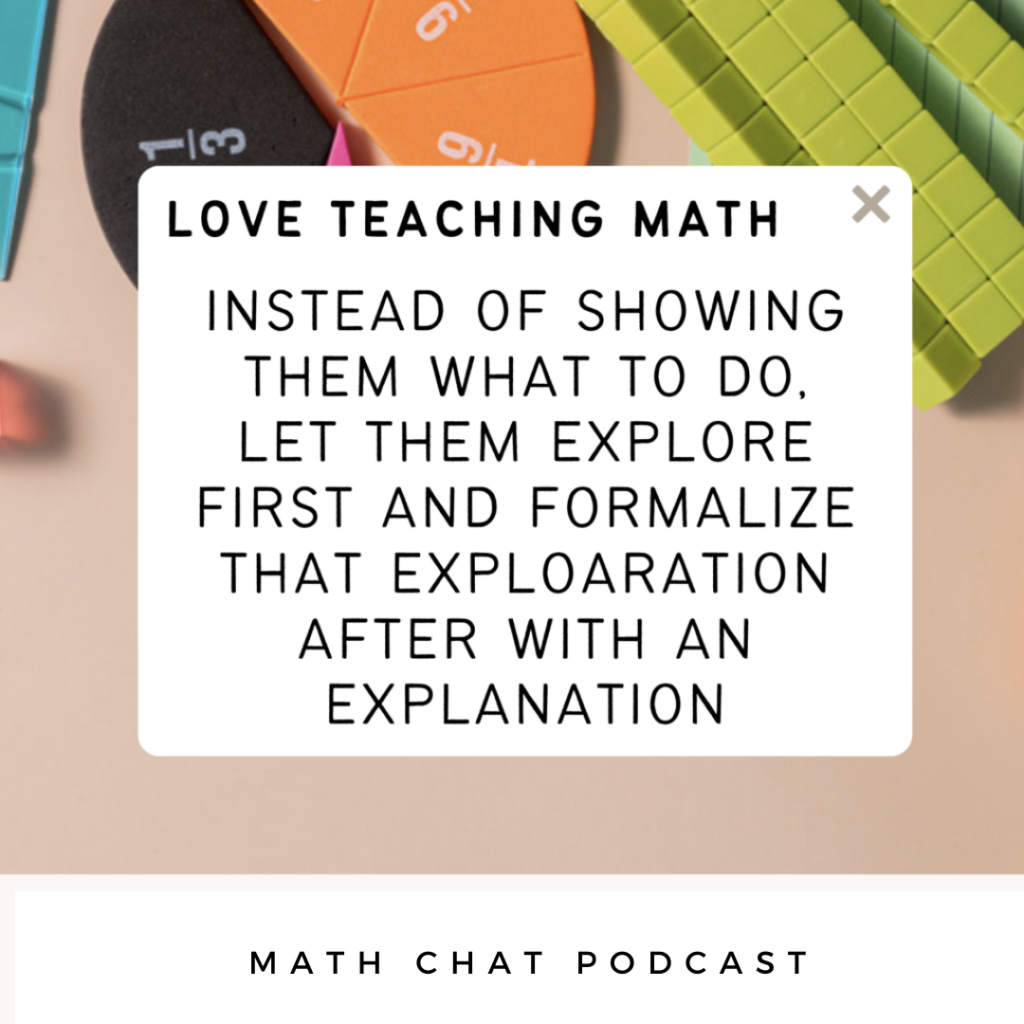
#5 Get Students Talking
In order to do that you’ll need to have students that will talk in math class. Students will need to know how to explain their thinking. You’ll need to start talking in math. I don’t know about you but I love talking…so this one was hard for me at first because I love to do the talking… haha
But seriously, one of my favorite things to do is to facilitate a discussion. To listen closely to students to see what THEY think and ask questions to get them to explain their thinking. Asking the right question that really gets kids excited is my teacher fuel (other than coffee). It fills me up to see kids getting excited to share because I’m not talking, but instead turning the floor over to them.
#6 Real World Experiences in Math
Now, in order to really love math… lets take math out of math… lets look OUTWARD. We make art about the books we read to inspire others to read, we create posters in science to help solve an environmental problem by inspiring others to change their habits, we write to solve problems & get others to listen, we do work in school to help our students develop the skills they’ll need to change the world, right?

Yes I want my students to be able to do well on the standardized math test, and know the standards. But I also want my students to go into the world with the skills to think creatively, problem solve, have agency and passion to make a difference and shape the world into what they want.
So let’s do more than make the problems include our students names, our school mascot, or the students’ interests. Let’s relate it to what they are reading about in ELA or the opinion writing they are doing. Maybe there’s a local or school issue your students have been talking about (maybe it came up during morning meeting)… while your students are learning to add, subtract, multiply and divide they are also learning to problem solve…and problem solving skills are applicable outside of math.
That being said, don’t overlook the “real world” problems that face kids… like birthday party planning, budgeting their holiday lists, or helping their grandma at the grocery store. The more you know your students and their lives, passions, questions, and curiosities, the better you will be able to sprinkle real world scenarios into math problems.
Let me know what you are going to start today to start to love teaching math! DM’s are always open @hellomonamath
Links Mentioned in this Episode on how to Love Teaching Math:
❤️ 6 Ways to Teach Math Like You Love It!
📱 Go to my instagram @hellomonamath & share with me how you’re listening!
🔥 MY TEACHER HOT TAKE 🔥
- Teacher PD should match the TEACHER’S goals, not the schools goals.
- PD should be provided by teachers, that understand what it’s like to teach in this post-covid world.
Other ideas for increasing your leadership:
Unlock Your Leadership Potential: 10 Energizing Tips for Educators
